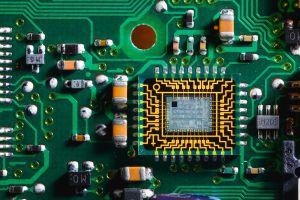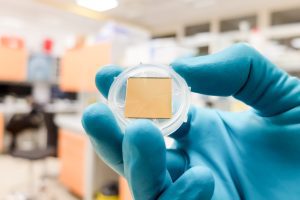Key Takeaways:
- Photonic integrated circuits (PICs), or optical ICs, utilize photons to perform functions traditionally done by electrons, and are revolutionizing fields like medical diagnostics through highly sensitive biosensors.
- Unlike electronic ICs, PICs experience minimal energy loss and interference, resulting in significantly higher speeds and efficiency.
- Despite their advantages, PICs are currently larger, more expensive, and less common than traditional ICs, though they are becoming more commercially available.
- PICs are already seeing early adoption in areas such as optical metrology, communications, and quantum computing, and are poised to become ubiquitous in the future.
Harnessing Photons for Advanced Biosensing with PICs
Every day, you use dozens of devices containing microchips (integrated circuits; ICs). These mini electronic assemblies consist of tiny transistors, resistors, and amplifiers, all carefully installed on a semiconductor wafer. But electricity is not an ideal medium when it comes to ICs: bandwidth and speed are limited, electron-to-electron interference slows things down, and energy is lost over time. For optimal performance, forward-thinkers are looking to substitute photons for electrons and use photonic integrated circuits instead of standard ICs.
An optical IC is typically composed of laser diodes, waveguides, filters, and gain media. Waveguides are the analogy to metallic wires, and using optical principles such as total internal reflection they guide the light in whatever direction desired. All the components of a PIC are installed on a flat base; perhaps a silicon wafer. Inside of this PIC, photons move at the speed of light, and they aren’t slowed down by other photons. Impressive speed and the fact that there’s almost no energy loss make a photonic integrated circuit incredibly powerful and efficient.
So why weren’t all electronic ICs replaced by optical ICs yesterday? PICs are still in development, and although they are now available commercially they are more expensive and harder to find than your standard IC. They are also bigger than electron-based ICs, although ‘big’ here is relative. Electronic components may be extremely small, and a hundred million transistors can be installed on 1 mm of IC space. The elements of a PIC are significantly larger, leading to optical integrated circuits that are measured on the micron scale. However, when additional micro-optics are included on the PIC the size differential goes the other direction, and the use of optical ICs enables lower-weight, compact systems that are easy to install.

Applications of Optical ICs
In the future, optical ICs may be as ubiquitous as the electronic microchips you use today. Some fields that are seeing early adaption of photonics integrated circuits include:
- Optical metrology, and specifically LIDAR and fiber-optical sensors
- Optical communications
- Terahertz Imaging
- Widely tunable lasers, externally modulated lasers and transmitters, and integrated receivers
- Biosensors
- Quantum cryptography and computing
- Optical coherent tomography (OCT)
Often the decision is made to add specialized components to a photonic chip. These customized integrated circuits are known as application specific photonic integrated circuits, or ASPICs.

Lab-on-a-chip Biosensors
Photonic integrated chip biosensors are changing the field of medical diagnostics, enabling rapid, label-free on-site testing with higher reliability and better sensitivity than the lab tests previously relied on. In fact, modern photonic biosensors can detect concentrations of specific biological substances with concentrations as low as attomolar concentrations, 10-18 moles per liter.
What is the secret? The careful design of the high performance photonic devices. Optical ICs designed for biosensing are usually built on a silicon nitride base (SIN). SiN is well suited for visible to near-infrared light and enables a short bend radius, so the waveguide may be ‘rolled up’ to form a very long route. This gives the biosensors extra-high sensitivity.
When target molecules (biomarkers) come in contact with a biofunctionalized coating on the sensor, minute changes in the refractive index occur. This is picked up by built-in photonic transducers and the signal is relayed via the waveguides.
Photonic Integrated Circuits and Telecommunications
When using traditional ICs, 70% of optical communication equipment failures have one cause: fiber coupling failures. But when a photonic integrated circuit is used, the fiber coupling is eliminated and the reliability and transmission capacity is greatly increased. Optical fiber communications and free-space optical communications make use of PICs for signal generation, detection, and regeneration.
GREAT ARTICLE!
Share this article to gain insights from your connections!




